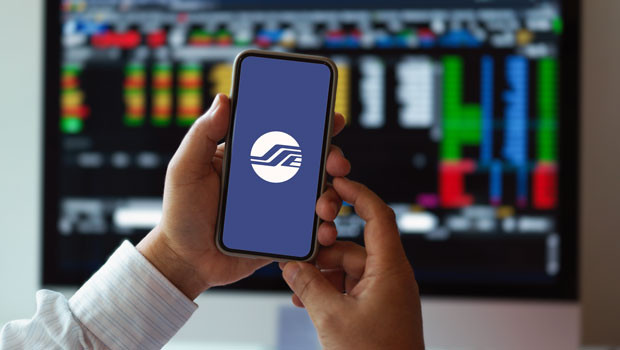
Source: Sharecast
China’s industrial profits fell 1.5% in July from a year earlier, a marked improvement after months of steeper declines.
TickMill market strategy partner Patrick Munnelly noted that “data showed that industrial profits declined at a slower pace in July, suggesting that efforts to reduce overcapacity might be easing the pressures from intense producer competition.”
However, secondary US tariffs of 25% on Indian shipments took effect, doubling overall duties on the country’s exports to 50%.
“Trump implemented a hefty 50% tariff on certain Indian goods, the highest in Asia, targeting India for its purchases of Russian oil, thereby disrupting years of attempts to strengthen US-India relations,” Munnelly said.
Indian markets were closed for a holiday.
Markets mixed on China data, US trade developments
In Tokyo, the Nikkei 225 rose 0.2% to 42,480.50, supported by a 20.74% jump in Nikon Corporation, a 6.14% gain in Chugai Pharmaceutical, and a 4.49% rise in Advantest.
According to Munnelly, “Nikon's shares surged 21% as Ray-Ban parent company EssilorLuxottica contemplated boosting its investment,” while “tech stocks in Asia advanced ahead of Nvidia's earnings report, with investors eager to hear the company's insights on chip demand to determine if the global market surge that began in April would continue.”
The broader Topix index slipped 0.07% to 3,069.74.
Chinese equities fell sharply despite the industrial data improvement.
The Shanghai Composite dropped 1.76% to 3,800.35, led lower by Beijing Vantone Real Estate, down 10.03%, Chongqing Fuling Electric Power Industrial, off 10%, and Shandong Hiking International, which fell 9.97%.
The Shenzhen Component lost 1.43% to 12,295.07.
Hong Kong’s Hang Seng Index retreated 1.44% to 25,157.00, weighed by China Resources Mixc Lifestyle, down 9.08%, CSPC Pharmaceutical Group, off 6.36%, and Hansoh Pharmaceutical Group, which slid 5.68%.
South Korea’s Kospi 100 rose 0.19% to 3,222.70, buoyed by Hyundai Heavy Industries, up 11.32%, Samsung Heavy Industries, gaining 6.8%, and HD Korea Shipbuilding & Offshore Engineering, ahead 6.48%.
Australia’s S&P/ASX 200 climbed 0.28% to 8,960.50, led by Lovisa Holdings, up 13.24%, Worley, which gained 11.02%, and Liontown Resources, ahead 9.52%.
In New Zealand, the S&P/NZX 50 fell 0.74% to 12,861.84, dragged by EBOS Group, down 13.87%, Ryman Healthcare, off 3.21%, and Skellerup Holdings, which slipped 2.58%.
Munnelly highlighted that “a gauge of Asian tech equities rose by as much as 0.7%.
“Futures for US and European stocks also increased in anticipation of Nvidia's announcement later in the day.”
In currencies, the dollar rose 0.33% on the yen to trade at JPY 147.88, 0.46% against the Aussie to AUD 1.5468, and 0.57% on the Kiwi to change hands at NZD 1.7157.
Munnelly noted that “the dollar index rose modestly, recovering from losses incurred on Tuesday due to President Trump's efforts to oust Fed Governor Lisa Cook,” while “gold prices dropped by 0.6%, and Treasuries remained stable after long-term bonds from the US, France, and the UK fell on Tuesday.”
Oil prices, he added, “stayed unchanged as the US imposed new tariffs on India.”
Brent crude futures were last down 0.21% on ICE at $67.08 per barrel, while the NYMEX quote for West Texas Intermediate was also off 0.21%, at $63.12
China industrial profits fall, Australian inflation accelerates
In economic news, China’s industrial profits fell for a third straight month in July, underscoring persistent deflationary pressures and weak demand despite a series of government support measures.
Profits at major industrial firms slipped 1.5% year on year, following a 4.3% drop in June, while losses in the first half eased slightly to a 1.7% fall over the January-July period, National Bureau of Statistics data showed on Wednesday.
The decline came despite a trade truce with the United States and recent efforts by Beijing to bolster consumption and curb price wars.
Analysts warned that without a lasting resolution on trade and stronger domestic demand, confidence among businesses will remain fragile.
Cost competition had already weighed on key sectors.
Top solar manufacturers Tongwei, JA Solar and Jinko Solar all reported wider first-half losses as prices fell, while state-owned automaker Anhui Jianghuai swung to a net loss of CNY 772.8m from a CNY 300.8m profit a year earlier.
Bank lending contracted in July for the first time in two decades, highlighting the drag from weak consumer and business sentiment.
Profits at state-owned firms fell 7.5% in the first seven months, while private and foreign firms each recorded a 1.8% gain.
Elsewhere, Australia’s monthly inflation accelerated faster than expected in July, complicating the Reserve Bank’s efforts to manage interest-rate cuts.
The consumer price index (CPI) rose 2.8% year on year, above forecasts for a 2.3% increase, while the trimmed mean measure jumped to 2.7% from 2.1% in June, data from the Australian Bureau of Statistics showed.
Housing, food, and energy were the main drivers, with electricity prices up 13.1% from a 6.3% fall in June as government rebates ended in New South Wales and the Australian Capital Territory.
The Australian dollar gained after the data, while three-year bond yields rose to 4.43% as markets trimmed bets on further near-term easing.
The RBA had already cut rates three times this year to 3.6%, with governor Michele Bullock signaling a cautious approach to additional moves, saying the monthly inflation gauge was volatile and pointing to a fuller quarterly measure due later this year for a clearer read on price trends.
Reporting by Josh White for Sharecast.com.